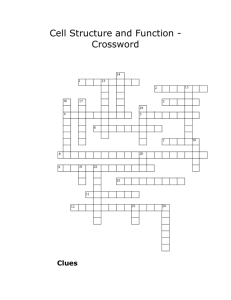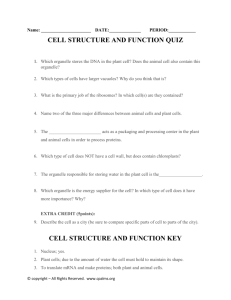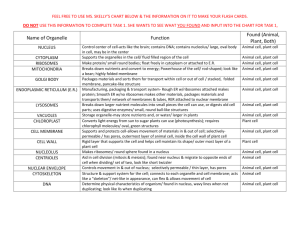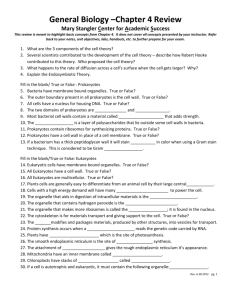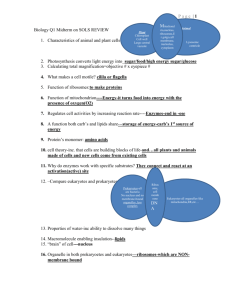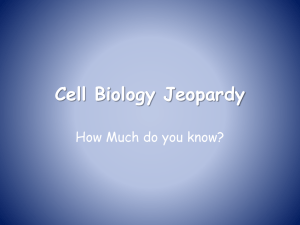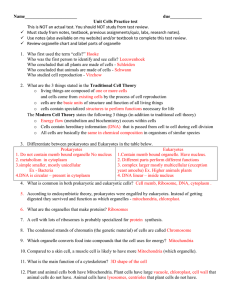Cell Test Review
advertisement
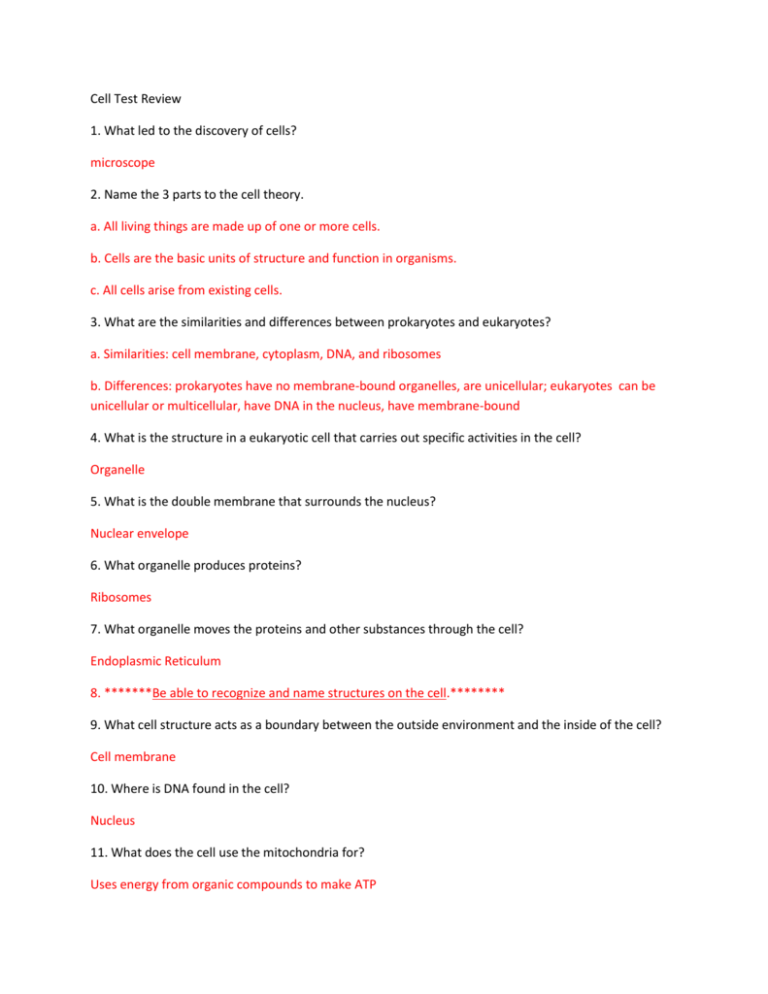
Cell Test Review 1. What led to the discovery of cells? microscope 2. Name the 3 parts to the cell theory. a. All living things are made up of one or more cells. b. Cells are the basic units of structure and function in organisms. c. All cells arise from existing cells. 3. What are the similarities and differences between prokaryotes and eukaryotes? a. Similarities: cell membrane, cytoplasm, DNA, and ribosomes b. Differences: prokaryotes have no membrane-bound organelles, are unicellular; eukaryotes can be unicellular or multicellular, have DNA in the nucleus, have membrane-bound 4. What is the structure in a eukaryotic cell that carries out specific activities in the cell? Organelle 5. What is the double membrane that surrounds the nucleus? Nuclear envelope 6. What organelle produces proteins? Ribosomes 7. What organelle moves the proteins and other substances through the cell? Endoplasmic Reticulum 8. *******Be able to recognize and name structures on the cell.******** 9. What cell structure acts as a boundary between the outside environment and the inside of the cell? Cell membrane 10. Where is DNA found in the cell? Nucleus 11. What does the cell use the mitochondria for? Uses energy from organic compounds to make ATP 12. What does the golgi apparatus do? Modifies, sorts, and packages proteins 13. In plant cells, what are the large membrane-bound compartments in which water, waste products, and nutrients can be stored? Vacuoles 14. If a cell requires a lot of energy, what organelle will it need to have a lot of? Mitochondria 15. What organelle is used in the photosynthesis of plants? Chloroplast 16. What do chloroplasts and mitochondria have in common? Production of ATP 17. Give an example of a prokaryotic cell. Bacteria 18. What level of organization is the large intestine? Organ 19. What is the basic unit of structure and function in an organism? Cells 20. What type of cell has a nucleus? Eukaryotes 21. What must all substances cross in order to enter or leave the cell? Cell membrane 22. What structure makes ribosome parts in the nucleus? Nucleolus 23. What organelle do the ribosomes attach to? Rough Endoplasmic Reticulum 24. Which organelle does not have ribosomes attached to it? Smooth Endoplasmic Reticulum 25. What surrounds the plant cell but not the animal cell? Cell Wall 26. In multicellular organisms, similar cells group together to make tissues. 27. What is the genetic material that provides instructions for making proteins? DNA 28. Name the levels of organization of cells in a multicellular organism. Cell – Tissue – Organ – Organ System 29. What three structures are present in plant cells but not animal cells? Cell Wall, Chloroplast, Large Central Vacuole Be Sure to Study all Cell Sheets given in class with Diagrams and Functions. Be able to label: nucleus, nucleolus, mitochondria, Both ER’s (smooth and rough), ribosomes, chloroplasts, cell membrane, cell wall, vacuoles, cytoplasm, golgi apparatus, lysosomes, secretory vesicles
